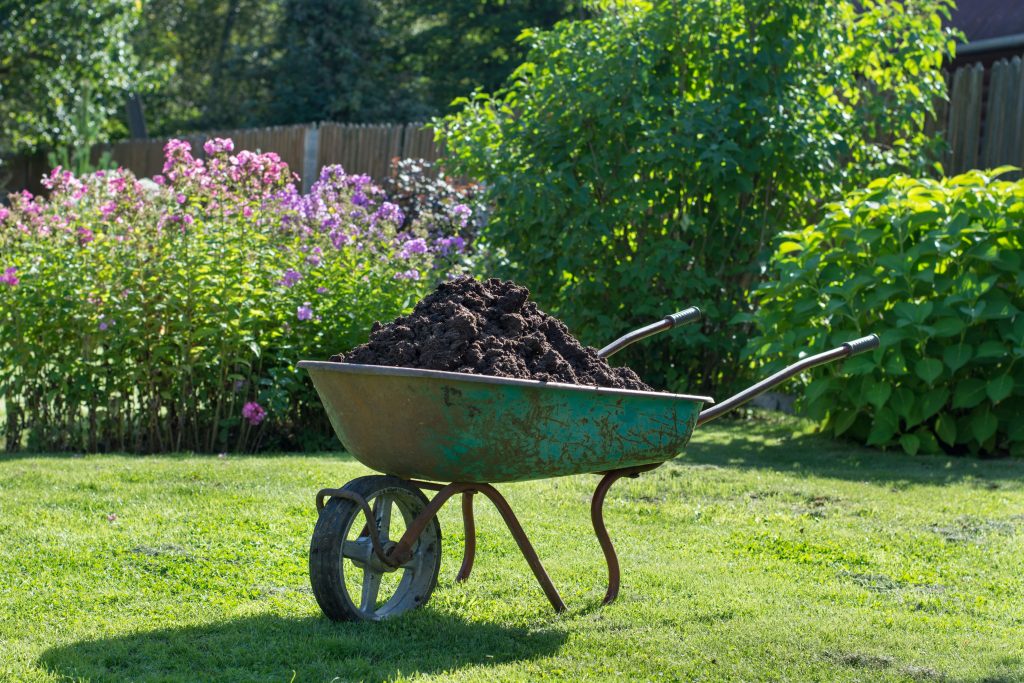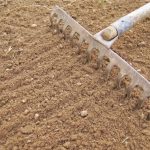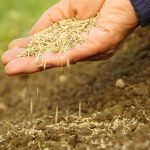If you’re just overseeded your lawn, or spread some seed to make your lawn grow thicker, and the seed isn’t growing, there could be a few different reasons why this is occurring.
In this guide, we’ve explained what to do if your grass seeds don’t grow after being planted.
1. Check that your seeds haven’t expired
Grass seeds only last a limited amount of time before they become sterile. If your seed bag was quite old, it could be that the seeds aren’t sprouting because they’ve expired.
The exact amount of time that grass seeds last depends on how they’re stored, and temperature/moisture levels in the surrounding environment.
In ideal conditions, grass seed will last 4-5 years in a sealed bag, or about 1-2 years in an open bag. If the temperature is warm, or there is moisture in the environment, your grass seed won’t last quite this long.
If your grass seeds might have expired, it’s a good idea to get a fresh bag and try again, ensuring not to open the bag until you’re ready to begin spreading.
2. Ensure that the seeds are getting plenty of moisture
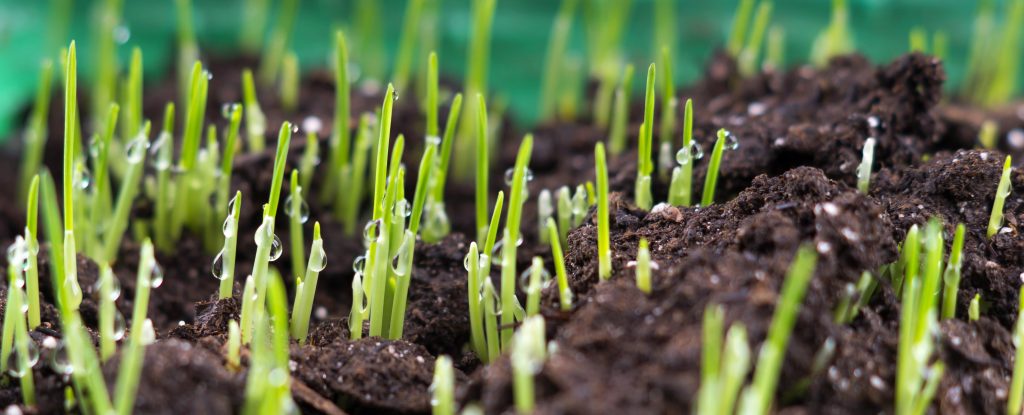
New grass seeds need constant watering in order to germinate. If you’ve planted your seeds during a dry spell and not watered them enough, this could be why they’re not growing.
Here’s how you can ensure that your grass seeds get plenty of moisture.
- When you first sow grass seeds, you want to give them a good soaking – at least an inch of water, or more if the ground is completely dry.
- After this, you want to water your seeds twice a day, until they begin to sprout.
- Then, you want to water them every day, assuming it hasn’t rained, or sometimes every second day, for the next six to eight weeks.
3. Check that the weather isn’t too hot
Even if your grass is getting plenty of moisture, extreme heat can kill grass seeds. This is why it’s best to sow grass seeds in the spring or autumn.
If you need to sow grass seeds when the weather is warm, you can:
- Give them extra water, and ensure to water them in the morning, before the sun has become hot enough to evaporate the water.
- Place burlap sacks on top of the seeds until they germinate, especially during the hottest parts of the day. This helps to block the sunlight from scorching the seeds, and can also prevent birds from eating your grass seeds.
4. Ensure that the seeds are reaching the soil

Grass seeds need to be able to reach the soil in order to grow. They don’t necessarily need to be covered, but they do need to reach the ground.
If not many seeds are growing, this could be because they haven’t been able to reach the soil.
Prior to spreading grass seeds, you want to clear the way for them to reach the soil as easily as possible. You can do this by:
- Mowing the lawn, and collecting your grass clippings. If your lawn mower doesn’t have a grass bag, you can use a leaf blower to clear the clippings as much as possible, or at least give them a day or two to decompose.
- Scarifying the lawn, to clear any excess thatch that could be blocking the seeds from reaching the soil.
5. Check that your soil is fertile
Most grass seeds aren’t too fussy, and will grow in many different types of soils, including sandy, loam, and clay soils. However, if your seeds aren’t growing, there are some important things to check with your soil:
- Is the soil pH relatively neutral, with a reading of about 7? In the UK, acidic soils can be a particular problem for new lawn seeds. If the pH reading is too low, you might need to spread some agricultural lime, to reduce the acidity of your soil.
- Are you sowing your grass seeds on good quality topsoil, or on less fertile ground? Grass ideally needs at least five inches of good-quality topsoil, with a rich, dark colour, to grow well. However, seeds can begin to sprout in just an inch or two of topsoil.
- Is there any weed killer in the soil? If so, you will need to wait a few weeks before sowing grass seeds, because weed killers will kill your grass seeds as they germinate. If you’ve recently applied post-emergent weed killer, you’ll need to wait at least a week before spreading grass seeds, and you’ll want to wait at least six weeks if you’ve applied post-emergent weed killer.
It can also be a good idea to top dress the lawn with a thin layer of compost right after sowing grass seeds, to provide them with nutrients. If it’s been a while since you’ve fed your lawn (if overseeding an existing lawn), or you have concerns about the fertility of the soil, it might be worth adding some fertiliser the next time you try to sow grass seeds.
6. Check that you don’t have a drainage problem
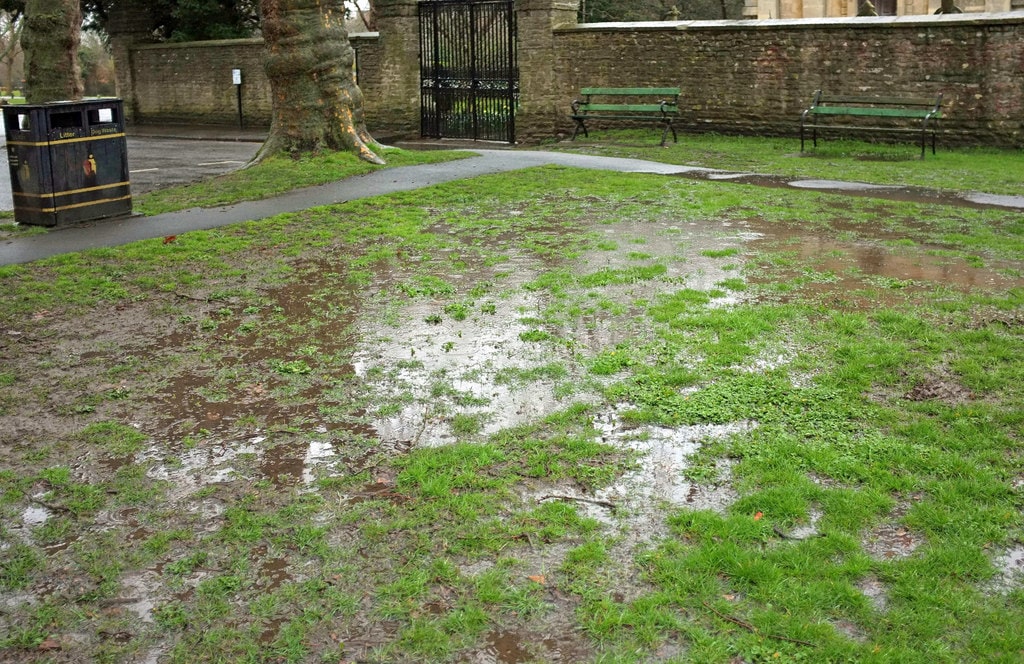
It’s also possible that your grass seeds are drowning, which is preventing them from growing.
Typically, grass seeds will grow fine after being subjected to torrential rain, provided they have not been washed away (which is possible on sloping lawns). However, if you have a drainage problem, and water is pooling on your lawn, this can prevent grass seeds from growing.
- It’s a good idea to aerate your lawn prior to sowing grass seeds, especially if the soil is compacted. This also helps the seeds to reach the soil. To do this, grab a hollow tine aerator, and make holes every 4cm or so in your lawn, leaving the plugs of dirt you’ve pulled out on the ground – they’ll be reabsorbed into the soil. Once you’ve aerated your lawn, you’ll have reduced compaction, and made it easier for water to drain down into the subsoil, and away from the surface.
- If you have a very serious drainage problem, this will be more difficult to fix. You can read our guide to installing a lawn drain to learn more about fixing serious drainage issues.
Conclusion
You’ve reached the end of our guide explaining what to do if your newly-planted grass seeds don’t grow.
If you’re still having trouble getting new grass seeds to grow, feel free to leave us a comment, and we’ll respond as soon as we can.

I’m Josh, and I’m the head writer at Lawn Care Pro.
I love everything lawns, but I’m a bit of a lawn mower nerd. I spend a lot of my free time tinkering with mowers, and planning my mowing schedule for the next few weeks.
I’m also into cars, which comes in very helpful when servicing a mower engine!

